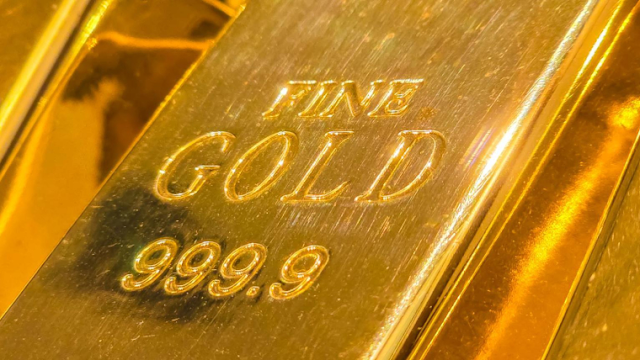Last warning ?
SO ALAN GREENSPAN - former chairman of the Federal Reserve - thinks this equals the Great Crash, if not out-bads it.
"It's getting increasingly evident that this is a once-in-a-century type of phenomenon," he told the ever-fragrant Maria Bartiromo in an interview with CNBC this week, "not the standard type of liquidity crisis that we have seen in the past."
"It's verging on the issue of solvency."
To gauge the true scale of this crisis, Greenspan went on, just consider the fact that it took sovereign credit to stabilize first the UK and then US financial systems. When Northern Rock went belly-up last Sept. and then Bear Stearns blew up this spring, Treasury bonds had to be lent out like adjustable-rate home loans circa 2006, covering short-term black holes with government debt.
Without these loans of government bonds, the banks simply wouldn't lend to each other. They needed securitized tax payments to gain the credibility needed for raising new funds in the market. Short of offering government debt to put up as collateral, they found the cost of borrowing money - when they found any money to borrow - simply too high to bear.
"It's still very evident from [inter-bank lending] spreads that we have not gotten closure yet," Dr.Greenspan continued, pointing to the ongoing premium charged for loans backed by anything other than sovereign credit. So to fix the problem - or at least tease it out for months if not years - clearly the world needs more government bonds for the big banks to borrow and put up against cash loans in the market.
"It's essentially, fundamentally the price of homes in the United States which are determining...the ultimate collateral of mortgage-backed bonds, pretty much around the world."
Looking ahead, he concluded that "we're still nowhere near the bottom of the home-price thing" - the word "thing" standing in for "crash...collapse...crisis...deflation" and all the other phenomena Greenspan must still believe can never apply to real-estate prices.
As key contractor, if not the architect, of today's pan-global banking crisis, he chose to keep US interest rates way below the rate of inflation - making debt pay and savings a suck of real value - for three years straight starting in August 2002.

That period marked the first run of sub-zero returns paid-to-cash since the inflationary '70s, back when loose money worldwide led to a bubble in prices that needed 20% interest rates to revive the world's faith in the Dollar.
The start of this decade also saw the Gold Price - dormant-to-dead ever since the US took that strong medicine at the start of the '80s - double inside five years.
"First warning," as Marc Faber wrote in his Gloom, Boom & Doom Report of Sept. '07, of trouble ahead.
"Ultra-expansionary US monetary policies with artificially low interest rates led to bubbles all over the world and in every imaginable asset class. The price of Gold more than doubled in nominal terms and against the Dow Jones Industrial Average."
So why didn't gold take a dive when Greenspan's successor - Ben Bernanke - tip-toed his way back to 4% real rates of interest in late 2006...? Because early gold buyers never believed the Fed would succeed in keeping rates there. With housing now a political issue - and home ownership a god-given right for even the flakiest debtors - the first sign of trouble would cause a collapse in real rates, destroying the value of money in the hope of achieving "Reflation Part II".
Hey, it worked after the Tech Stock bubble blew up. Why not again? And faced with a much greater crisis, or so Ben Bernanke believes, he's managed to out-Greenspan the Maestro...pushing real US interest rates way down to minus 3% and worse.
Take Gold as a marker of stress, and the true extent of today's crisis becomes clearer still. Bear Stearns' fire-sale to J.P.Morgan in mid-March - which required an open-ended loan of $29 billion from the Federal Reserve - saw Gold jump to $1,032 per ounce. We think it's signal that Alan Greenspan ignores it.
"Central banks, of necessity, determine what the money supply is," as he told Congress in a 1999 hearing. "If you are on a gold standard or other mechanism in which the central banks do not have discretion, then the system works automatically.
"The reason there is [now] very little support for the gold standard is the consequences of those types of market adju`stments are not considered to be appropriate in the 20th and 21st century. I am one of the rare people who have still some nostalgic view about the old gold standard, as you know, but I must tell you, I am in a very small minority among my colleagues on that issue."
Today, almost a decade later, the Federal Reserve and its peers across the world are trying to prevent the money supply from shrinking again. That was the fear amid the "Deflation Scare" of 2002, which caused the Fed to ordain sub-zero rates, creating not only the bubble in housing but also the collapse of true money values against oil, food and pretty much all raw materials.
The world's nostalgia for gold, in response, has seen it treble in price vs. the Dollar and more than double against the Euro, Yen and British Pound. But the cheerleader for cheap money when running the Fed, Alan Greenspan points instead to government bonds when gauging the size of today's crisis. A true policy wonk, Greenspan thinks only of political bail-outs to protect the system, rather than considering how private investors might choose to protect themselves and their wealth.
Heaven knows they won't get any help from Bernanke's repeat of the Maestro's "reflationary" error.
